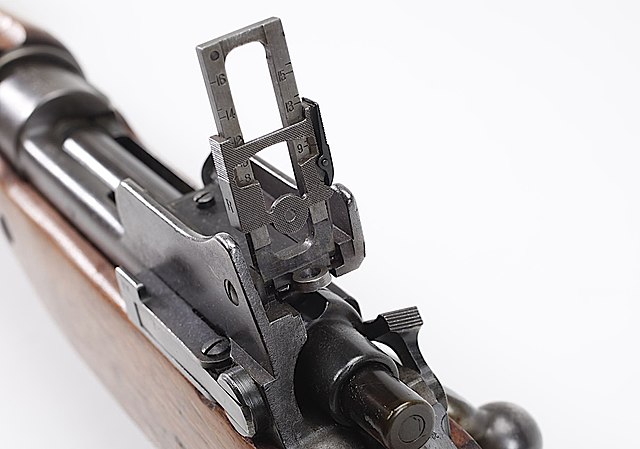Point-blank range
distance at which a firearm or projectile can be fired directly at its target and hit From Wikipedia, the free encyclopedia
Remove ads
Point-blank range refers to any distance where a certain firearm can hit a target without the need to adjust for bullet drop. When a bullet leaves a firearm, it is pulled downwards by gravity.

Remove ads
In practice
When shooting at a distant target, the shooter must point the firearm above the target to adjust for this. If the target is close enough to the shooter, the distance the bullet drops will be very small. In this case, the shooter can aim the gun straight at the target. The sights of a gun are set so that the barrel has a small upward tilt.
When the bullet leaves the gun, it starts by rising and later drops. This means that weapon hits too low for very close targets, too high for mid-range targets, too low for very far targets. It hits point blank at the two distances when it crosses between too low and too high.
Remove ads
Examples
For a .270 Winchester, the bullet first crosses the line of sight at about 23 m (25 yards) as it isrising and again at about 250 m (275 yards). With this gun, point blank range for a deer size target is about 275 m (around 300 yards). Point-blank range is different for each weapon. The flatter the bullet's trajectory or the larger the target, the longer the point-blank range will be.[1]
Popular usage
In popular usage, point-blank range has come to mean very close range but not close enough to be a contact shot.[1]
References
Wikiwand - on
Seamless Wikipedia browsing. On steroids.
Remove ads
